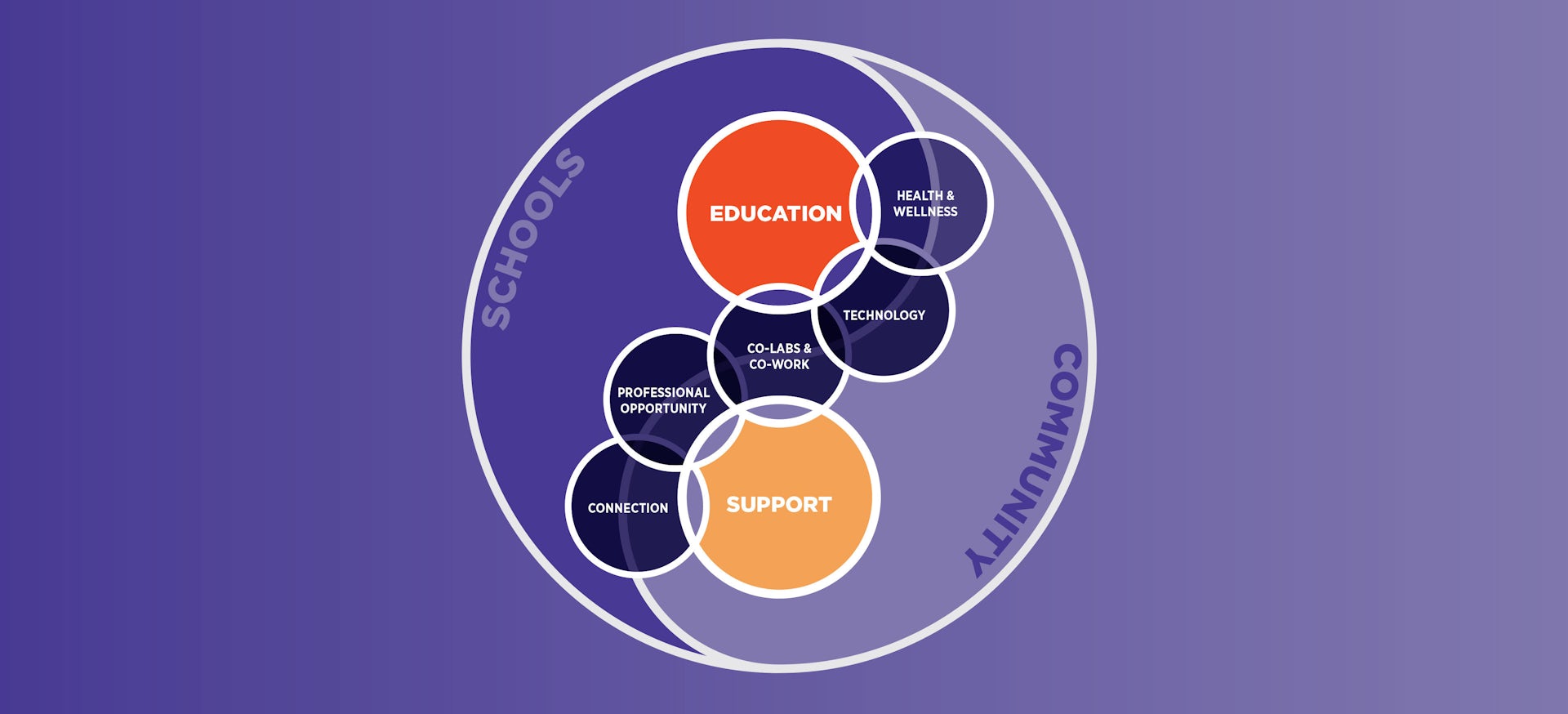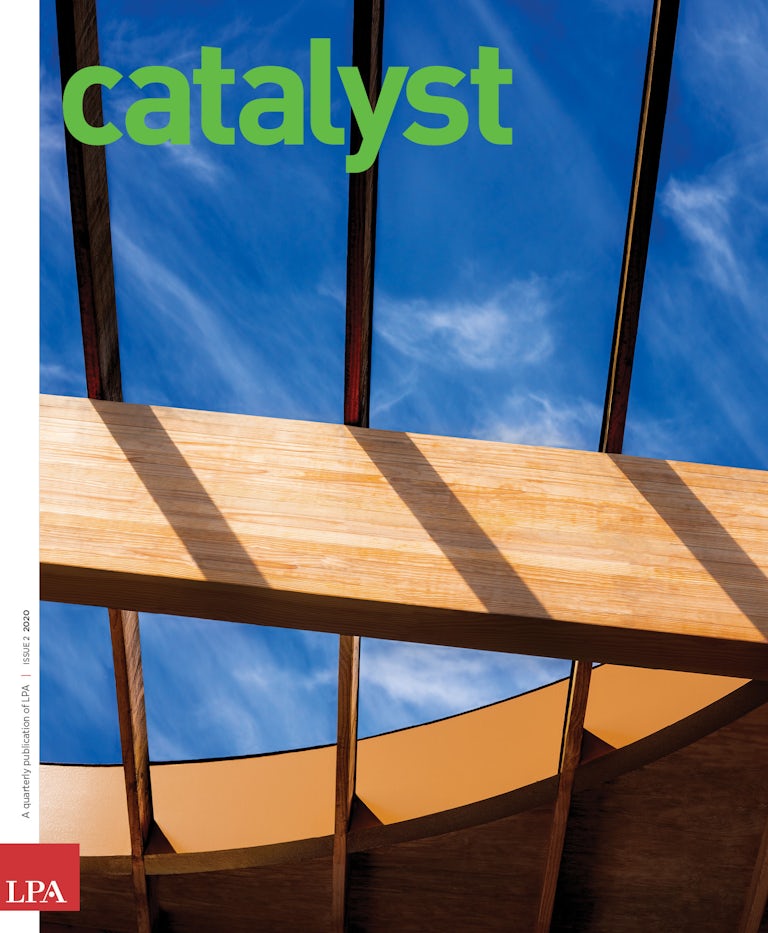When the pandemic hit, we learned that schools are “essential.” Campuses played a key role in the eco-system of communities, providing resources and support to families beyond the needs of students, from food to wellness checks.
As districts examine the post-COVID-19 future of schools, we must not forget what we’ve learned from these experiences. Instead of closing off schools to the community forever, what if we reimagined schools to realize the benefits of the relationship between the two, developing the campus as more of a community center?
The idea of expanding the role of the campus in the community is a growing priority for many districts. A recent survey of education leaders conducted by our in-house research team, LPAred, found 84.6 percent of district administrators rated community health and wellness as the number one priority focus area, above pedagogy and facility use, finance and operations and extracurricular activities.
Once you begin exploring the idea, a wide range of possibilities emerge that can help the community and learners. What if we incorporate wellness centers and clinics into more campuses? What about support spaces for parents? Are there ways to share learning and recreational facilities to maximize community resources and collectively build a culture of health and wellness?
As we examine the future of campuses, it makes sense to explore opportunities to co-locate community services on campuses, such as libraries and health services. The school has a civic presence that was not fully recognized before. Embedded health services can address the physical and mental health of students and parents, recognizing that schools will need to create closer ties to families to help students progress.
Last year, as part of a Forward Thinking exercise, a team of LPA architects explored how an urban campus could integrate with a transportation hub and community services to create a center to support parents and families. The ground floor was a combination of co-work spaces, collaborative spaces and specialized learning environments, a place where parents could work in the same areas as their children’s schools. The campus was programmed around activity-based settings and place-based learning, learning within your local context, which influenced the inclusion of exploration labs, incubator team rooms and a virtual 360 projection room.
It was eye-opening to explore how many ways a campus could improve a family’s daily experience.
In future plans, Districts should consider more parent centers and community spaces within a school. In some of our master plans, we’ve started to introduce this idea, looking for ways to support families, local culture and health services in the school learning environment, so that these resources are available year-round.
Now, many districts are sending many of these resources to the home, or they are handled at an array of facilities. But when students are not in school, how do those resources still get provided for the community, whether it’s Wi-Fi, nutrition or a sense of belonging? An open approach can support families and improve learner outcomes.
Reimagining the Campus as a Community Center
The expanding role of the campus in the community is a growing priority for many districts, as they look for new ways to support families and students.
A recent survey of education leaders found 84.6% of district administrators rated community health and wellness as the number one priority focus area.
Many of the fundamental shifts occurring in education pre-COVID are even more relevant now. In our “new normal,” educators agree, schools need to respond to the needs of students and develop more personalization and project-based learning opportunities, recognizing that not all learning happens in the classroom. Designing collaboration and outdoor spaces for experiential activities will grow more important as we rethink learning space.
As students go through the learning process, instead of a one-size-fits-all approach, typologies can be designed around spaces that are supporting different types of activities, reflecting the needs of the specific community. In an activity-based center, we can shift the space configurations to allow students to meet in public-facing collaborative environments with their advocate or mentor.
Early feedback from districts shows some high school students are performing better in the more comfortable home environment. They have more time to work on their projects and they like the different setting choices available at home. Schools could offer the same choices in spaces, whether they were working alone or with classmates or mentors – how might we design for comfort on-campus?
Now is the time to re-examine fundamental aspects of how schools operate. Will attendance-based funding work anymore for many districts, when students are encouraged to stay home when they are ill? Classroom sizes and scheduling are all being explored. Let’s take these lessons with us into the future and instead of co-locating students by grades, perhaps they should be grouped more by shared interests, and activity and learning preferences?
The knee-jerk reaction in the months ahead will be to secure schools, keep everyone out and close the doors. That may be necessary in the short term, but we should consider the long-term prospects of creating campuses that are more responsive to families and find new ways to give back to the community and support students.
Several studies have shown there is a real risk to student well-being and performance from walling off campuses. We want to create spaces where students feel healthy and secure, where they can realize their best self. There’s been tremendous progress in the last decade on focusing on the needs of the students and using research as the guide to develop more collaborative and inspiring learning environments. Let’s not slip backwards. We can keep our students safe and still find ways to open the campus to the community.















